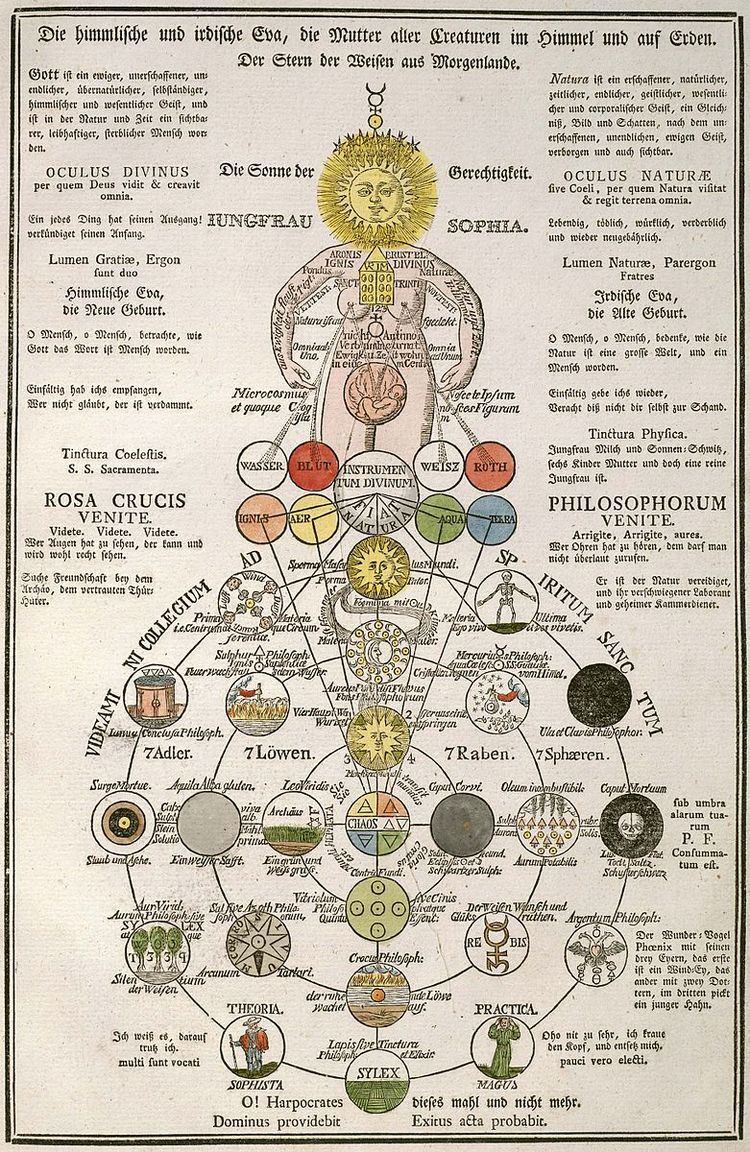 | ||
The Order of the Golden and Rosy Cross (Orden des Gold- und Rosenkreutz, also the Fraternity of the Golden and Rosy Cross) was a German Rosicrucian organization founded in the 1750s by Freemason and alchemist Hermann Fichtuld. Candidates were expected to be Master Masons in good standing. Alchemy was to be a central study for members. Much of the hierarchical structure for this order was used in Societas Rosicruciana in Anglia (SRIA) and from there, the Hermetic Order of the Golden Dawn.
Contents
History
The fraternity was founded in the 1750s, but it is not certain when it came into existence. Many documents and books mention it from the eighteenth century. For instance, Frater U.D. believes that in 1710, the idea for the order was born with the publication of Sigmund Richter's (using the name Sincerus Renatus) The perfect and true preparation of the Philosophers Stone according to the secret of the Brotherhoods of the Golden and Rosy Cross. By the 1770s, the order had centers in Berlin, Hamburg, Frankfurt am Main, Regensburg, Munich, Vienna, Prague, Poland, Hungary, and Russia.
The order slowly began to decline after the death of King William II.
Structure and governance
The order is subdivided into:
